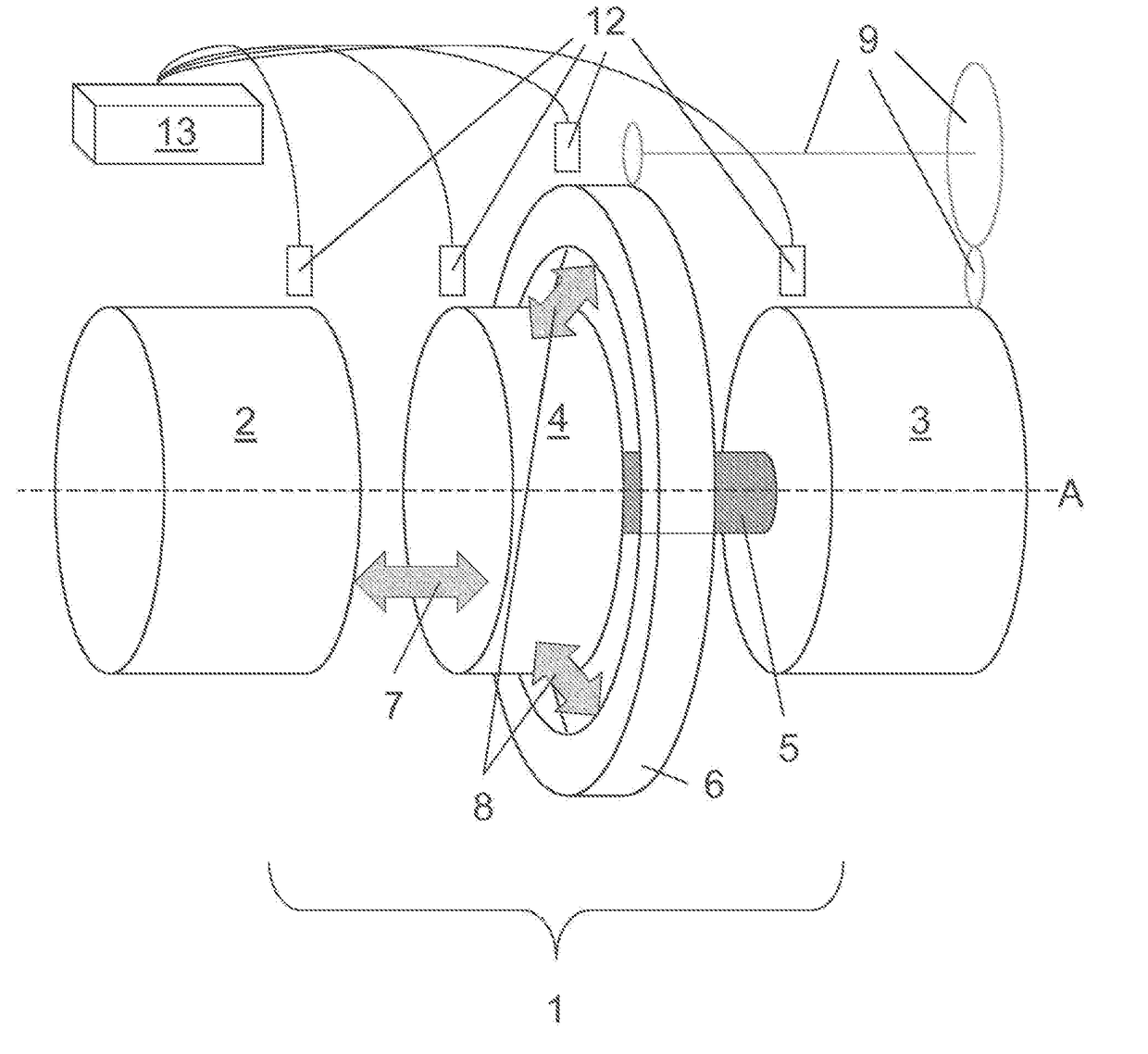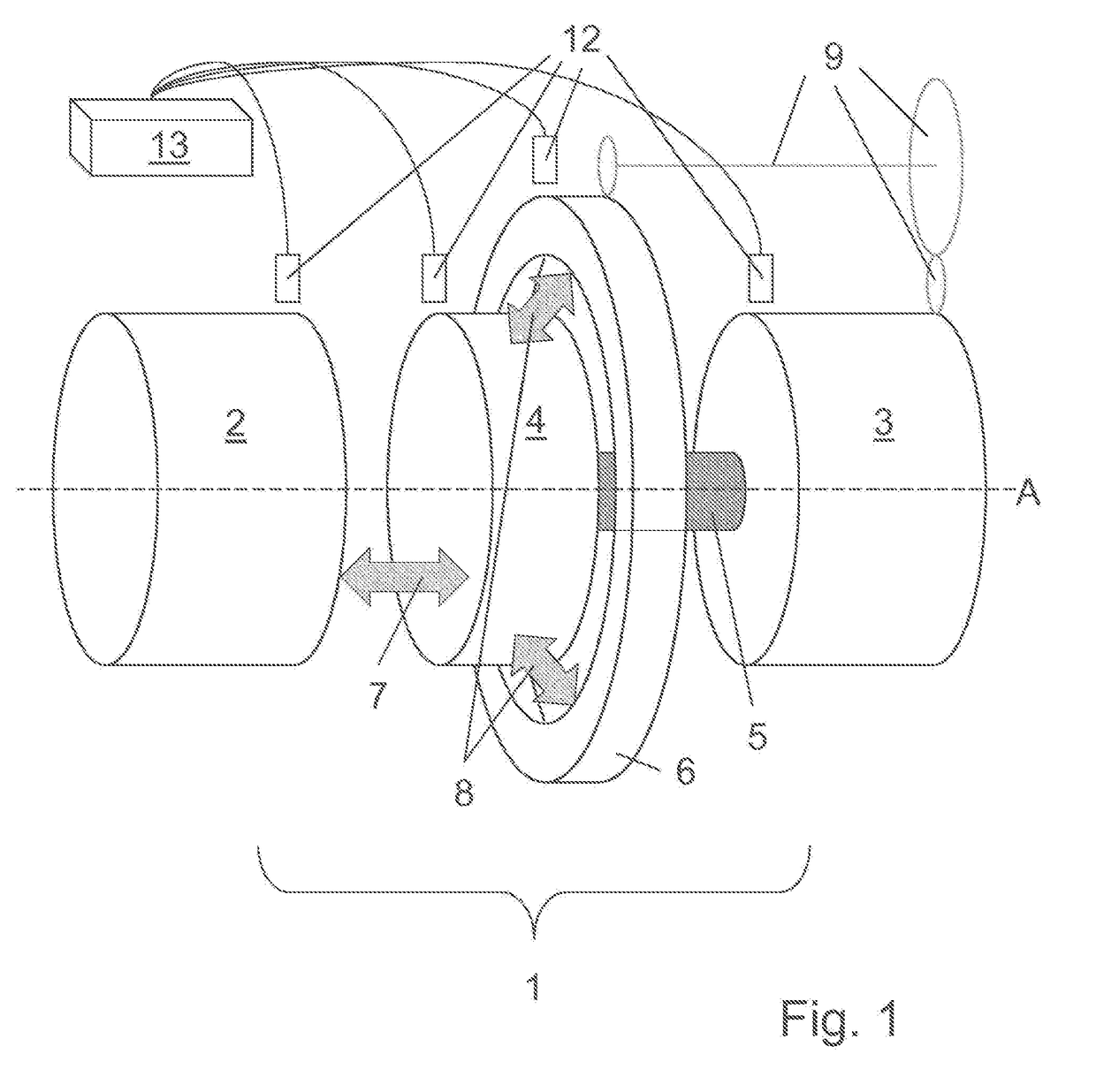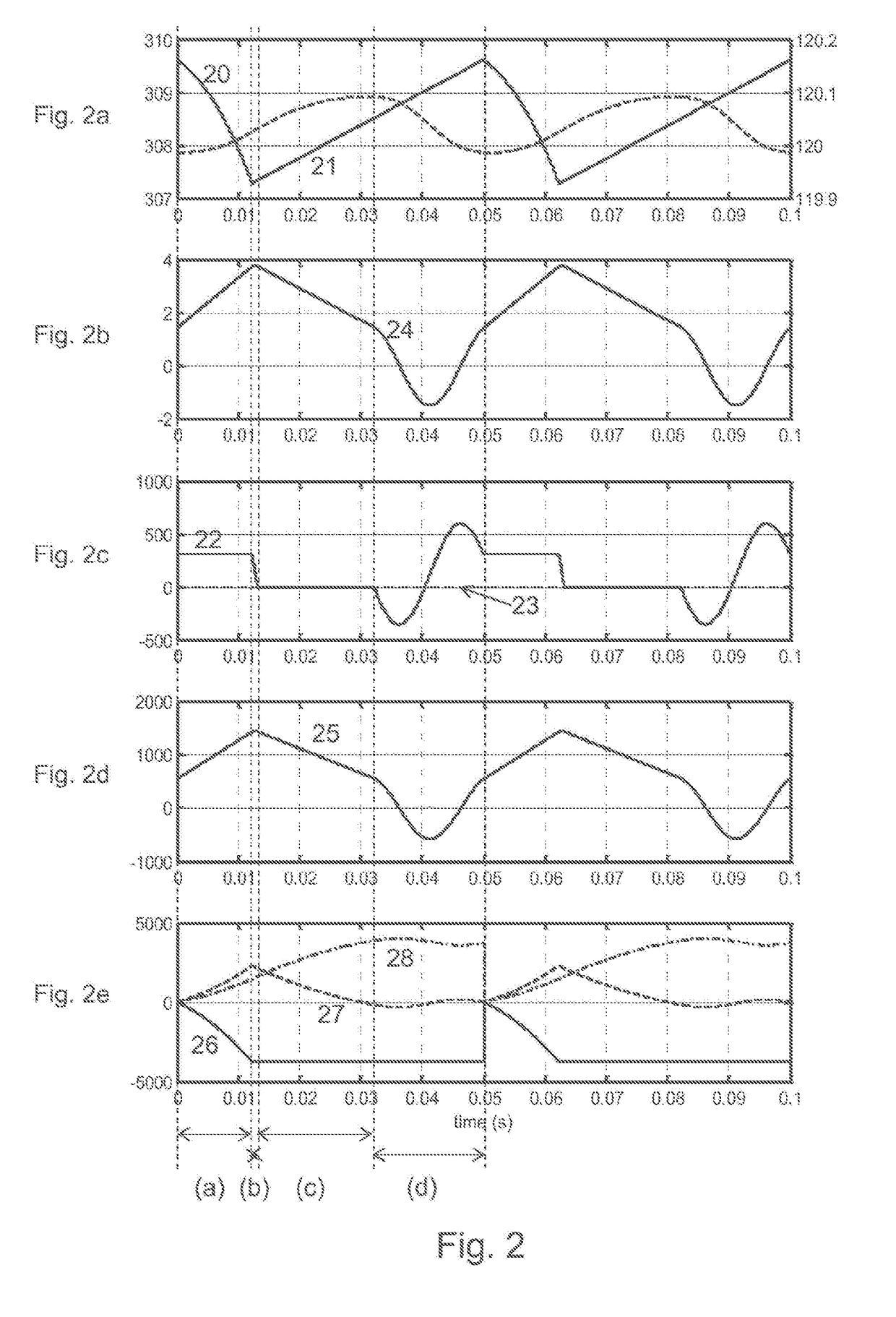Transmission with a torsion spring and method for operating a transmission
a transmission and torsion spring technology, applied in torsion springs, transmissions, transportation and packaging, etc., can solve the problems of limited-speed switching operation of gearboxes, inability to select the gear ratio, and disadvantage of continuously variable transmissions, so as to achieve no friction, no energy loss, and faster rotational speed
- Summary
- Abstract
- Description
- Claims
- Application Information
AI Technical Summary
Benefits of technology
Problems solved by technology
Method used
Image
Examples
Embodiment Construction
[0034]The object of the present invention is to indicate a continuously variable, mechatronic transmission of the kind described at the outset that has a simple and reliable structural design, and in which no friction losses and wear arise due to grinding couplings or punctiform transmissions via chains or belts. This invention utilizes the aforementioned fact that a torque subjected to high-frequency changes that acts on the inert masses of the drive (e.g., crankshaft of an internal combustion engine) and output (drivetrain and vehicle) essentially has the same effect as a constant torque, which corresponds to the chronologically average value of the torque undergoing high-frequency changes.
[0035]Another object of the invention is to describe a method in which power is transmitted by means of such a mechatronic transmission.
[0036]The object is achieved by the distinguishing characteristic in the independent claims. Preferred devices are indicated in the subclaims.
[0037]The idea of ...
PUM
 Login to View More
Login to View More Abstract
Description
Claims
Application Information
 Login to View More
Login to View More - R&D
- Intellectual Property
- Life Sciences
- Materials
- Tech Scout
- Unparalleled Data Quality
- Higher Quality Content
- 60% Fewer Hallucinations
Browse by: Latest US Patents, China's latest patents, Technical Efficacy Thesaurus, Application Domain, Technology Topic, Popular Technical Reports.
© 2025 PatSnap. All rights reserved.Legal|Privacy policy|Modern Slavery Act Transparency Statement|Sitemap|About US| Contact US: help@patsnap.com



